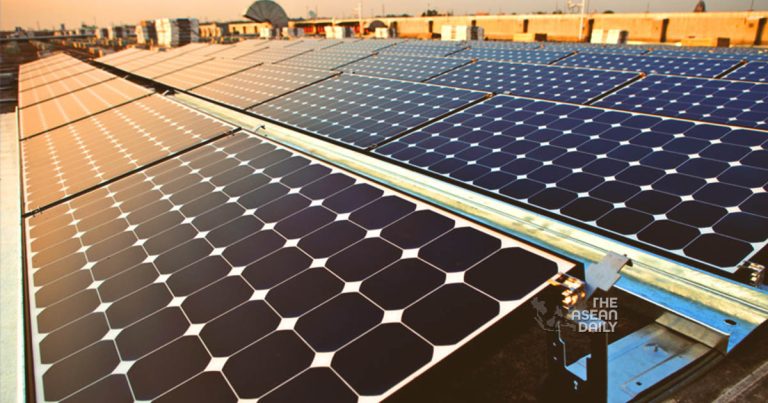21-8-2024 (SINGAPORE) The thriving solar industry in Southeast Asia, second only to China in panel production, is confronting an uncertain future as the United States prepares to impose substantial tariffs on the region. This development threatens to disrupt a decade of growth fueled by Chinese firms establishing factories in the area.
Thailand, Vietnam, Malaysia, and Cambodia, which collectively account for over 40% of solar module production capacity outside China, are now in Washington’s crosshairs. These countries have become hubs for Chinese solar manufacturers seeking to circumvent US import levies on their domestic market.
The impact is already being felt, with industry giants such as Longi Green Energy Technology Co and Trina Solar Co scaling back operations in the region. Yana Hryshko, head of global solar supply chain research at Wood Mackenzie Ltd, notes a shift in strategy: “The mood of the suppliers is to pack the lines, especially the cell lines, and move them to either Indonesia, Laos or the Middle East.”
This upheaval is symptomatic of broader turbulence in clean energy supply chains as the US, Europe, and others attempt to reclaim market share from China’s dominant position in solar equipment and electric vehicle battery production. Simultaneously, Chinese solar firms are grappling with a worsening domestic glut that has already led to the collapse of smaller players.
The crux of the issue lies in a US investigation concluded last August, which found that some Chinese manufacturers were illegally bypassing levies imposed on panels imported directly from China in 2012. This ruling resulted in varying levels of import taxes on five companies in the region.
Now, some US firms are lobbying Washington for further tariffs of up to 272% on all solar products from the four Southeast Asian countries. While Bloomberg New Energy Finance (BNEF) suggests the likely range will be between 30% and 50%, this still represents a significant increase from the current 25% levy on Chinese imports, which the White House plans to double.
The US International Trade Commission’s initial vote in June, determining that manufacturers are being harmed by cheap imports from Southeast Asia, has brought these tariffs closer to reality. This has prompted a surge in US solar panel imports from the region, with a record 36% increase last quarter as buyers scrambled to secure supply before tariff waivers expired.
The repercussions are already visible, with reports of Longi halting production lines in Vietnam and winding down operations in Malaysia, Trina planning to shut some regional capacity, and Jinko Solar Co closing a plant in Malaysia.
However, not all Chinese factories in Southeast Asia are expected to shut down. Dennis Ip, an analyst at Daiwa Capital Markets, suggests that while older facilities might close, newer plants could survive by finding alternative markets in India, Europe, and elsewhere.
This stricter US stance comes amid a broader political climate of increasing toughness against Beijing in the run-up to the November election. The tariffs could potentially jeopardise Washington’s decarbonisation efforts, given that more than three-quarters of its solar product imports came from Southeast Asia last year.
Deborah Elms, head of trade policy at the Hinrich Foundation, anticipates that efforts to limit perceived circumvention of US restrictions on Chinese imports are likely to continue, especially if Donald Trump is re-elected. She notes his particular focus on countries with which the US has trade deficits, including many Southeast Asian nations.




